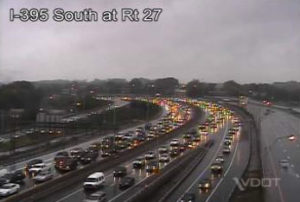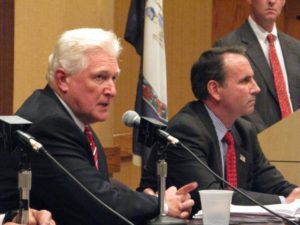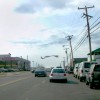 Arlington’s opposition to the I-95/395 HOT Lanes and the I-66 widening projects has inspired a special report from WTOP called “Arlington’s Way of the Highway.”
Arlington’s opposition to the I-95/395 HOT Lanes and the I-66 widening projects has inspired a special report from WTOP called “Arlington’s Way of the Highway.”
While noting the praise heaped on Arlington for being a model of smart growth, WTOP reporter Adam Tuss says that the county’s resistance to highway transportation projects has opened it up for criticism.
“There are others that scoff at the county, saying its officials take a parochial transportation view and only think about Arlington at the expense of the entire D.C. region,” Tuss reports.
County board chairman Jay Fisette, meanwhile, defended the county’s expensive lawsuit against the HOT lanes project by saying that the county is concerned about “the impact on our local communities and also insuring the movement of people.”
Do you think the county is doing the right thing, or does is Arlington selfishly ignoring the region’s “greater good?”




